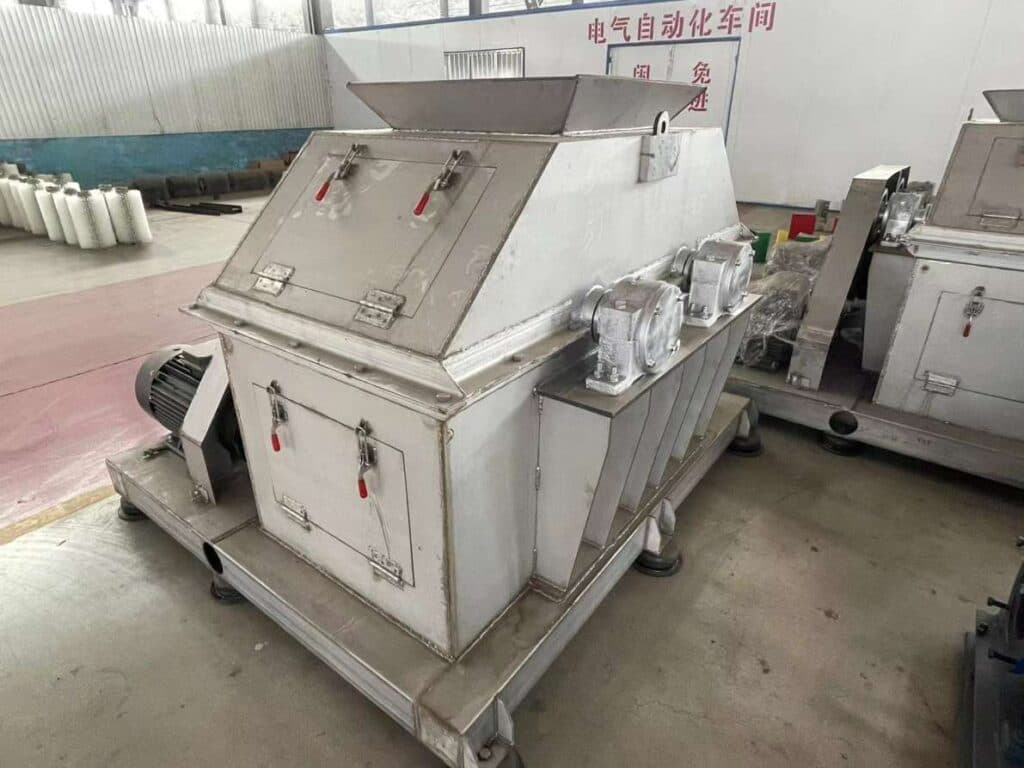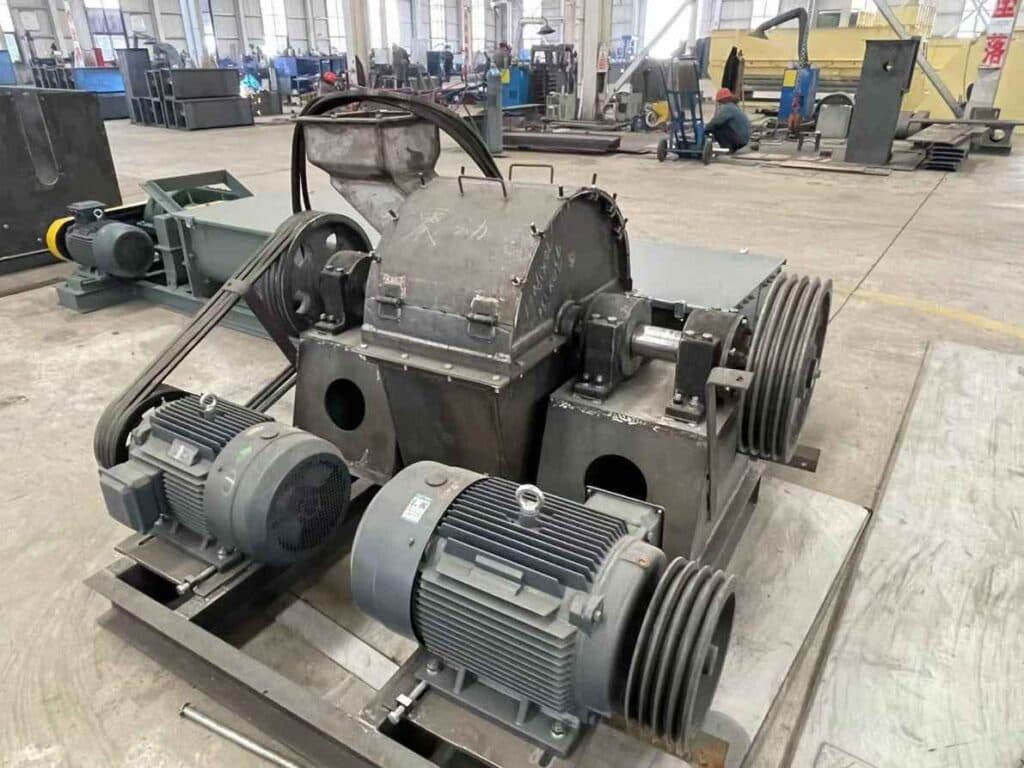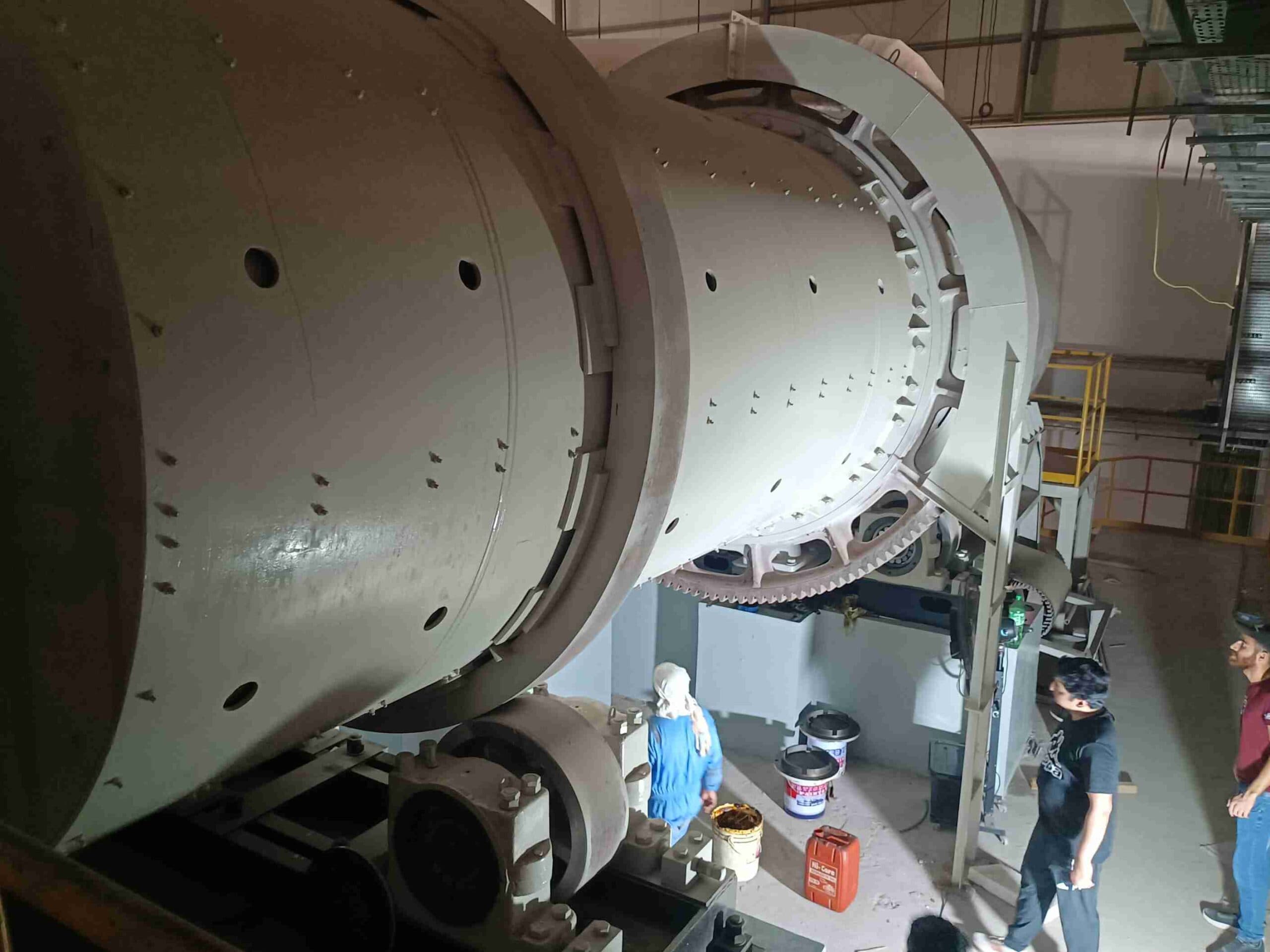What equipments are needed to set up a fertilizer plant?

There are a lot of equipment involved in the production process of NPK compound fertilizer, due to the limit length of the article, tonday in this article we will emphasis on the dryer, screener, crusher, and coating machine first, and then in our next blog we will introduce about other part of the equipment in the fertilizer plant. Ok I forgot, cooler yes we will also introduce about the cooler.
Fertilizer Plant Drying Equipment Introduction:
The granular fertilizer obtained by granulation usually needs to be dried so that the moisture content of the finished product can meet the requirements for storage, transportation and application. Commonly used drying equipment is a carbon steel rotary desiccant with direct heat transfer.
What is a rotary drum dryer for fertilizer plant?
- The rotary dryer is an inclined rotary cylinder. Its supporting device, transmission device, sealing of the cylinder and the inlet and outlet boxes are basically the same as those of the slurry granulation dryer. According to the drying requirements, the feed end of the cylinder is equipped with a baffle ring and a spiral baffle plate, followed by several staggered lifting plates of different types. The discharge end is equipped with a strip grille screen. There is a hopper on the top, which can take out large pieces of materials (-80mm) and export them from the outside of the discharge box for crushing.
What is a rotary drum dryer lifting plate aka flights
- The structural type and quantity of the lifting boards are related to the properties of the materials. It is required that the materials can be lifted up to form a uniform material curtain, increase the contact area with the hot air flow, and improve the drying intensity. The hot air flow and materials enter the barrel in a co-current manner. The characteristic is that the drying driving force gradually decreases along the direction of material movement, which is conducive to the completion of the drying process.
What is the anti-caking device of rotary drum dryer?
- In the front section of the feed end, a hammer device is installed to hit the cylinder wall with the rotation of the cylinder to prevent materials from sticking to the cylinder wall. The length-to-diameter ratio of the drum is generally L﹕D=3.5~7, and the filling factor is 20%~25%. In order to reduce the entrainment loss when the solid phase in the cylinder contacts with the hot air flow and is discharged out of the cylinder, the air flow speed in the rotating cylinder should not exceed 2~3m/s.
What is the design principle of fertilizer plant dryer?
- The main factors that affect the drying process are the inlet temperature of the hot gas, the moisture content of the particles and the residence time of the material in the barrel. Therefore, when designing a dryer, appropriate production data must be selected as the design basis according to specific conditions.
What are the types of screening equipment used in fertilizer plant? aka fertilizer screener

Fertilizer plant vibrate screener
Fertilizer plant vibrating screens can be divided into hanging type and sitting type according to the installation method. The screen box of the suspended vibrating screen is equipped with a screen mesh (single or double layer) with an inclination angle of 15° to 20°. Under the action of the vibrator, the screen box drives the screen surface to vibrate in a circular trajectory.
3 functions of vibrate screener
There are three functions of fertilizer plant vibrator screener:
- Loose the material layer on the screen surface so that fine particles have the opportunity to fall through the material layer onto the screen surface and be screened out through the screen holes;
- Make the material move forward along the screen surface;
- Make the difficult-to-sieve particles stuck in the sieve holes jump out to ensure that the sieve holes are clear.
How to adjust the fertilizer plant vibrate screener?
- The amplitude of the screen box can be adjusted by increasing or decreasing the adjusting plate of the eccentric block in the vibrator. The mesh shapes of the mesh are square and rectangular, and are woven with metal warp and weft threads. In order to make the particle size composition of the product under the screen change little, the screen hole size can be selected to be slightly larger than the required screening particle size. The long side of the screen with rectangular mesh is parallel to the direction of material movement. The advantage is that the effective area of the screen surface is large, the screening efficiency is high, and the fine particles are not easy to adhere to the mesh, so it is widely used.
What are the characteristics of ZJ Tongli vibrating screener?
The ZJ type fertilizer screen produced by tongli is a sitting-type single-layer single-axis vibrating screen with vibrating balls. It is used for grading various compound fertilizers. The installation inclination angle can be changed according to needs. The screen surface is stainless steel wire braided mesh. An interlayer is provided between the screen surface and the grate bars of the upper bracket. The mezzanine is divided into several small chambers, and oval rubber balls are placed in each small chamber. When the vibrating screen is working, the rubber balls jump up and down and impact the screen surface from below, shaking out the difficult-to-screen particles stuck in the screen holes and improving screening efficiency.
Fertilizer plant vibrate net screener
The vibrating net screen aka mesh screener is composed of a vibration motor, a screen box, a vibration reduction device, a screen, a dust cover and a hopper. The screen box is fixed, and the vibration motor is used as the excitation source to directly vibrate the screen.
What is the principle of vibrating mesh screen?
When the vibration motor rotates, the semicircular eccentric blocks at both ends of the motor shaft also rotate, generating periodic inertia forces, which are driven by the damping spring through the connecting rod, causing the screen fixed on the connecting rod to vibrate up and down; Due to the tilt of the screen surface, the material is thrown downward. Through the action of vibration and gravity, the material can be mechanically separated into components on the online screen and components below the screen to achieve the purpose of classification. The vibration motor is installed every 1.5m along the length of the screen surface, and the amplitude is adjustable. The screen is made of woven stainless steel wire.
What are the advantages of vibrating mesh screen?
Vibrating mesh screens are widely used in the phosphate and compound fertilizer industry due to their small dynamic load, large screen slope, high screening efficiency, good sealing and dustproof measures, easy maintenance, and high reliability.
Why does the compound fertilizer production line needs crusher?

- Because there are unqualified large particles and chunks in the semi-finished fertilizer products after granulation and drying of phosphorus compound fertilizer; they need to be crushed to reach the finished product particle size (1~4mm) requirements. There are many types of crushers used to break large pieces of fertilizer. The selection should be based on the nature, lumpiness, production volume, etc. of the fertilizer. Commonly used crushers include: chain crusher, cage crusher, and roller crusher. And now we will introduce every single one of them in detial.
Fertilizer plant Chain mill introduction
- The LP-type high-efficiency horizontal chain mill produced by Zhejiang Tongli is suitable for crushing various lump fertilizers (feed particle size ≤ 250 mm); it can crush superphosphate that has not been dried, contains water ≤ 14%, and contains about 6% free acid. The inner shell wall of the machine is equipped with a lining structure to prevent sticking materials, which has good effect in the compound fertilizer industry.
- Due to its simple structure, high efficiency, low cost, and easy maintenance and repair, chain crushers are widely used in the production of phosphate compound fertilizers and can also be used for materials that are easily hygroscopic and adhesive.
What is the working principle of Tongli Chainmill?
- The crushing mechanism of the chain crusher is a pair of rotors suspended with 4 to 8 sets of multi-row chains.
- The rotors are installed in parallel in the casing, each driven by an independent motor and rotate in opposite directions. When the rotor is stationary, the chain sag due to gravity.
- When the rotor rotates at high speed, the chain stretches out radially around under the action of centrifugal force.
- The materials added to the machine are constantly crushed by the impact of the chain and the impact between materials. The crushed materials are discharged from the discharge port below the gap between the two rotors.
What are the technical specification of Tongli Chainmill?
- The size of the circumferential speed of the end point of the rotor chain is related to the size of the crusher, the particle size of the product and the properties of the material; it is generally 30 to 50m/s. The feed particle size of the crusher is 20~75mm. In order to prevent the broken fertilizer from sticking to the inner wall of the machine casing and making it difficult to clean, the inner wall of the crusher is often lined with rubber plates.
What is Tongli cage crusher for fertilizer production line?
The crushing mechanism of the tongli cage crusher is two counter-rotating cages with different diameters. Each rotating cage is composed of two ring plates and several cage bars. Two concentric sets of turrets, driven by their own electric motor drives. Through the relative movement between the rotating cage bars, the added materials are squeezed and sheared with each other, breaking large pieces of material. The case walls are lined with anti-stick rubber sheets. The cage bars are cladded with high wear-resistant carbide. It is mostly used for crushing large ammonium phosphate particles.
Tongli fertilizer plant roller crusher what is it?
The crushing mechanism of the tongli roller crusher relies on two parallel cylindrical pressure rollers that rotate in opposite directions to clamp the material. Under the action of friction on the surface of the pressure roller, the material is pulled into the gap between the rotating rollers, and is squeezed by the pressure roller to break large pieces of material. The working surface of the pressure roller includes smooth surface, groove surface with grooves, tooth surface, etc., depending on the requirements of the crushed materials. Roller crushers are divided into double-rollers and three-rollers according to the number of rollers. Their main advantages are simple structure, low body height, reliable operation, convenient adjustment of crushing ratio, and ability to crush sticky and wet materials. Two-roller and three-roller crushers are suitable for crushing NPK, DAP, MAP and heavy superphosphate.
Tongli cooling equipment used in fertilizer plant: why Cooling?
The reason why fertilizer cooling is necessary is becase it is a step that is crucial to the finished product quality. After the fertilizer is dried with a desiccant, the temperature is relatively high, often reaching above 70°C. Generally, it cannot be directly packaged and stored. It must be further cooled by cooling equipment to reach a temperature below 45°C before packaging or storage to prevent agglomeration. The cooling equipment of granular fertilizers often uses rotary coolers and fluidized bed coolers.
Tongli fertilizer rotary cooler
- The rotary cooler is a horizontal cylinder. Its appearance, support structure, driving device, etc. are similar to those of the rotary dryer. They only have different uses.
- After the dried granular fertilizer enters the cooler from the feed pipe, it turns over as the cylinder rotates. There is a lifting plate inside the cylinder to spread the material downward evenly to form a material curtain. The cooling air (generally at room temperature) sucked from the head of the machine enters the machine, contacts the material in countercurrent, and performs heat exchange to cool it.
Tongli Fluidized-bed cooler
The fluidized bed cooler is based on the principle of fluidization, adding granular materials to the bed of porous plates. The cooling air is sent from under the orifice plate, causing the particles and the cold air flow to move relative to each other to form a uniform fluidized mixing state, conduct heat conduction, and achieve cooling purposes.
What is the working principe of a fertilizer fluidized-bed cooler?
- The fluidized bed cooler is a rectangular box structure made of welded steel plates. The cooling air enters from the air inlet chamber at the bottom, and distributes the incoming cold air evenly through the air regulating plate. Then it passes through the stainless steel porous plate and enters the particle bed for fluidization, and continuously moves the particles to the outlet for discharge to the dust removal system. Remove dust. The height of the bed material (100~150mm) is adjusted by the adjustable discharge weir set at the discharge point.
How to calculate the specification of a fertilizer fluidized-bed cooler?
According to the fertilizer particle size is 1~4mm, the pore diameter of the porous plate is 2~2.5mm, and the plate thickness is 1.5~2mm. The width of the fluidized bed is generally not greater than 3m to avoid poor dispersion of the cloth. In order to reduce the entrainment of fine powder when the gas is discharged, the height of the space above the fluidized bed is generally not less than 1.5m. The length of the fluidized bed is limited by the conditions for uniform gas distribution; if it is too long, multiple air inlet chambers need to be designed to ensure uniform gas distribution.
Tongli fertilizer plant rotary drum coating machine intro

- The rotary coating is a must buy item for fertilizer plant, why? Because if there’s no coating, then your finished product fertilizer will either clumping or falling apart.
- In order to reduce the agglomeration of the finished granular fertilizer and improve the effect of fertilization, after the finished fertilizer is cooled, there is often a process of adding a wrapping agent before packaging.
- The equipment used is a wrapping tube. Its shape is a hollow steel cylinder. Its support structure, driving mode and other structures are similar to those of a dryer. There are only strip-shaped lifting boards inside the drum for granular fertilizer to roll inside.
- The coating oil nozzle extends into the drum from the end of the drum and is sprayed on the surface of the particles; the coating agent powder (such as diatomite, kaolin, lime, etc.) is fed into the drum by a screw feeder, and the particles are stirred by the rotation of the drum. Cover with a hard shell. The finished granules have good appearance, are not easy to absorb moisture and agglomerate during storage, and are not broken during transportation, so they are suitable for storage and application.
Conclusion: fertilizer plant equipment overview
Dryers, crushers, coolers, coating machines, and vibrating screens are all very important equipment for compound fertilizer production, but there are many other equipment involved in an entire compound fertilizer factory, which can’t be finished in one article. So in the next article we will focus on the granulator and different granulation equipment.

